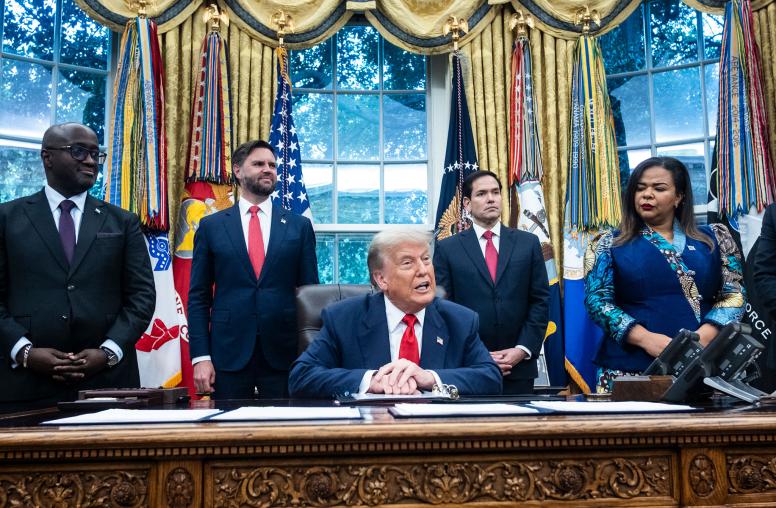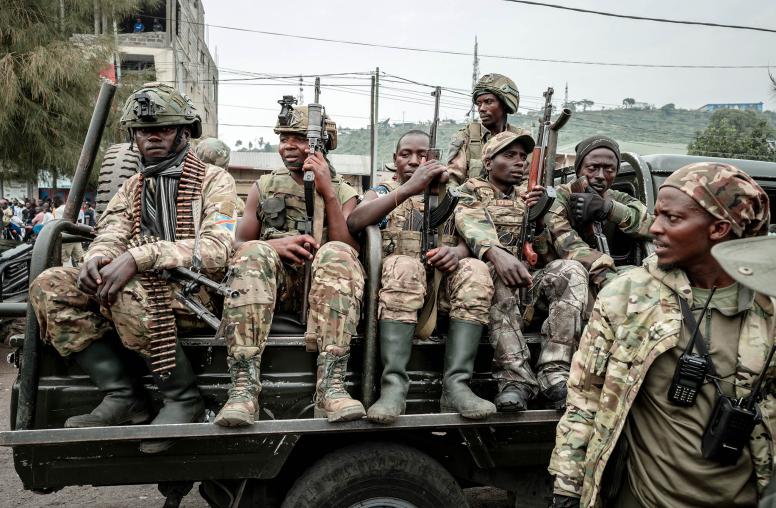Four Lessons from Outbreaks in Africa for the Age of Coronavirus
In making responses more effective, it’s essential to involve communities, local authorities, and nonstate actors.
As the coronavirus pandemic continues and new behavioral practices—from social distancing to avoiding handshakes and hugs—become expected norms overnight, there are crucial policy lessons to be learned from struggles against previous outbreaks of disease in Africa. Despite widespread poverty, weak infrastructure, and relatively few health professionals, there is an encouraging, long record of African countries—often with significant international assistance and cooperation—eventually managing to overcome dire health challenges. For non-African countries already facing large numbers of COVID-19 infections, as well as for African countries where the epidemic is now at an early stage, policymakers would do well to recall these four lessons of past epidemics—of both what to do and, perhaps almost as importantly, what not to do to confront this global threat.

Lesson 1: Engage local authorities and leaders as early as possible in responding to disease—the case of polio in Nigeria (2003–2004).
By the early 2000s, the incidence of polio had fallen by as much as 99 percent worldwide. This debilitating illness, which has been described as the 20th century’s “most feared disease,” can cause paralysis and death—and once infected hundreds of thousands of Americans, including President Franklin Delano Roosevelt.
But by 2002, there were as few as 201 polio infections in Nigeria, with the trajectory trending downwards. However, between July 2003 and August 2004, the five northern Nigerian states of Bauchi, Kaduna, Kano, Niger, and Zamfara all suspended vaccinations on account of rumors that the vaccine had negative side effects. Consequently, cases of polio in northern Nigeria surged. In a retrospective analysis on the outbreak, researchers argued that “the eventual prompts of the [vaccine] boycott were the public views of some very high-profile local leaders.”
In part, the increased visibility of a more expansive polio vaccination campaign contributed to it becoming a target of suspicion and concern, and its top-down approach alienated some local leaders. Vaccinations in these states did eventually resume, in most cases within months. But regaining trust and consent required extensive and careful engagement with local leaders—both political, traditional, and scientific. Tragically, however, the damage was already done, and the renewed spread of the virus meant that by 2012, Nigeria accounted for more than half of all polio cases worldwide. It took until 2019 for the country to finally eradicate wild polio transmission. In confronting new health challenges, therefore, the role of local leadership can be pivotal—as in Nigeria in 2003, its actions can either make or break the effectiveness of the intended response.
Lesson 2: Understand the affected community’s other health priorities—the case of Ebola in the Democratic Republic of the Congo (2018–2020).
The fearsome Ebola virus—which was first detected in 1976 in what is now South Sudan—killed two thirds of the 3,444 people it infected during the 2018–20 outbreak in the eastern Democratic Republic of the Congo (DRC). Congo’s outbreak came only a few years after the unprecedented Ebola epidemic in West Africa claimed a record 11,000 lives. But despite the clear threat Ebola posed to the Congolese, it was not everyone’s principal concern. As one worker for the medical charity Médecins san Frontières (MSF) recently remarked, “My priorities are security and making sure my children don't die from malaria or diarrhea. My priority is not Ebola—that is your priority.” And with the World Health Organization (WHO) recording more than 300 attacks against health care workers and facilities in the DRC in 2019 alone, it seems clear that such views were widely shared. MSF itself concluded: “Too much focus was placed on containing the virus instead of supporting the affected people. And without the trust of the community, we set ourselves up to fail the people of DRC.”
This is not to suggest that the most urgent health threat of the day—be it Ebola or now COVID-19—should not be the focus of health workers. But to tackle a disease in isolation of the community’s other health and security priorities may seriously undermine the response to the emerging outbreak, and, as in the DRC, risk extending the duration of the epidemic.
Lesson 3: Don’t blame the victims or stigmatize individual groups in society—the case of HIV/AIDS.
HIV/AIDS killed about 32 million people in the 20th century, making it the worst pandemic since the 1918 outbreak of influenza. Approximately 38 million more people are infected and live with the disease today. Positively though, the WHO now notes that “HIV infection has become a manageable chronic health condition, enabling people living with HIV to lead long and healthy lives.” Despite some shifts in attitudes, perceptions persist that the disease is primarily transmitted homosexually rather than heterosexually, and the stigma of the disease still holds back many from getting tested, revealing their diagnosis, and obtaining treatment. The persistence of these stigmas further reinforces misconceptions of the disease, rather than the reality that anyone is at risk of infection, no matter their age, gender, nationality, or sexuality. In 2018, the last year for which full data is available, there were still 1.7 million new HIV infections worldwide.
While COVID-19 has an entirely different method of transmission to HIV, a similar process of stigmatization is already occurring. Foreigners have been targeted in Ethiopia and Kenya as the perceived carriers of the coronavirus. From Italy to the U.S., people of apparent Asian origin have also been arbitrarily singled out as being responsible for spreading the disease. While appeals to nationalism and xenophobia are easy to make, as the HIV pandemic made clear, the long-term consequences of entrenching a new form of stigmatization can damage society severely and are not easily countered. As WHO Director-General Tedros Adhanom Ghebreyesus has commented, “The greatest enemy we face is not the virus itself; it’s the stigma that turns us against each other.”
Lesson 4: Include a broad coalition of society, not just the government, to respond to health emergencies in areas of conflict—the case of Yellow Fever in Darfur, Sudan (2012).
The 2012 outbreak of yellow fever in Darfur was the worst occurrence of the disease in Africa in 20 years. This virus causes a hemorrhagic fever and is spread by mosquitoes. While the disease historically originated in Africa, it spread to the Americas with the slave trade, and was once so serious that it crippled the city of Philadelphia—a 1793 outbreak killed 10 percent of the city’s population, prompted the evacuation of much of the rest, and brought about widespread quarantines.
Although major conflict in Darfur had largely ended by 2012, access to the region was still heavily limited by Sudan’s authoritarian government. One particularly sensitive site—the contested, gold-producing area of Jebel Amir, where several groups eyed control—was also one of the areas most heavily hit by yellow fever. Further, epidemiologists found that young men working with animals were the most affected population, and hypothesized that changes in land use, which were a significant feature of the conflict in Darfur, likely contributed to the initial outbreak. While an effective vaccine for yellow fever exists, its deployment was complicated by the legacy of conflict, with almost three months passing before a campaign was mounted. Weak medical surveillance capabilities also limited detection of the disease’s spread.
In summary, even when the diagnostic and treatment tools exist and the methods for prevention and mitigation are known, violent conflicts—both past and present—cast a long shadow over future health interventions. Particularly in conflicts where the government was itself involved, we cannot expect citizens to trust the response of that same regime, acting alone, to a health emergency. In areas of conflict, a broad coalition—including the government, ex-combatants, civil society, other nonstate actors, as well as international agencies—is needed to bolster the credibility of the response.



